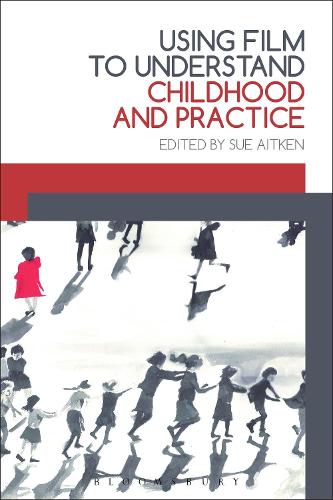
Using Film to Understand Childhood and Practice
(Hardback)
Publishing Details
Using Film to Understand Childhood and Practice
By (Author) Sue Aitken
Bloomsbury Publishing PLC
Bloomsbury Academic
8th February 2018
United Kingdom
Classifications
Professional and Scholarly
Non Fiction
Philosophy and theory of education
305.23
Physical Properties
Hardback
256
Width 156mm, Height 234mm
531g
Description
Using Film to Understand Childhood and Practice is an innovative and lively text which allows complex and challenging issues within childhood studies to be explored using the medium of filmed drama. By utilising popular culture, this book provides accessible narratives to students and lecturers needing to engage with complex theoretical ideas. In exposing theories to tangible situations often from more than one perspective in films, readers are helped to identify and recognise how theories about children and childhood can be applied. Each chapter uses a specific film to provide the basis for discussion in order to explore and analyse key concepts within childhood studies which include identity, social construction, families, political and biological narratives, childrens rights and participation. A range of international films are used including Charlie and the Chocolate Factory, Rabbit Proof Fence, The Hunger Games and The Red Balloon. First introducing the theoretical perspective to be discussed, chapters also include a contextual explanation of the film and list the specific scenes that will be used to guide students through. Concluding with discussion questions, students are asked to consider how the theories discussed might be translated in to their own experiences of children, childhood and practice. Not only supporting understanding of core principles and key ideas across any childhood studies degree, this book supports students throughout their university career and beyond by engaging with the journey of becoming a graduate as well as discussion of workplace issues and concepts after graduation.
Reviews
As well as providing a rich resource for undergraduates, this volume is a stimulus for lecturers, not to prompt them to draw on these particular films or the related theories necessarily; but as a way of thinking through their own choices of films to suit their own students and programmes of study and how to relate them to relevant theory in a way which prompts empathy and criticality. * Educational Review *
This is an excellent resource to facilitate students to critically engage with essential underpinning theories in childhood studies and by using the visual medium of film and popular culture makes complex theories relatable to everyday practice and understanding. The discussion and use of film clips supports a critical analysis of dominant discourses. * Amanda Hatton, Senior Lecturer, Childhood Studies and Early Childhood Studies, Sheffield Hallam University, UK *
Very well written and concisely covers the theoretical perspectives with insightful examples and analogies. * Stephen Henry, Lecturer, Manchester Metropolitan University, UK *
Author Bio
Sue Aitken is Senior Lecturer in Education at Manchester Metropolitan University, UK.
